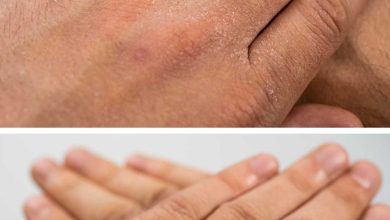Is Pyrex safe? Can it randomly explode?

Pyrex, a trusted name in kitchenware, has been a cornerstone in households worldwide for decades. Renowned for its resilience and ability to withstand extreme temperatures, Pyrex glassware has long been favored by chefs and home cooks alike. However, recent reports of Pyrex cookware exploding have cast doubt on its safety, leaving many to wonder about the causes behind such incidents and whether Pyrex is indeed safe for everyday use.
ADVERTISEMENT
The History of Pyrex
Early Introduction
Pyrex made its debut in the early 1900s, introduced by Corning Glass Works. Its composition, primarily borosilicate glass, rendered it resistant to heat, making it a kitchen essential. This durability allowed Pyrex to seamlessly transition from freezer to oven without the risk of shattering.
ADVERTISEMENT
Composition Changes
In the 1990s, there was a pivotal shift in Pyrex’s composition, transitioning from borosilicate glass to soda-lime glass. While this change aimed to enhance manufacturing processes and reduce costs, it inadvertently impacted Pyrex’s heat resistance. This alteration laid the groundwork for the issues surrounding Pyrex’s safety that we encounter today.
ADVERTISEMENT
Why Does Pyrex Explode?
Thermal Shock
One of the primary culprits behind Pyrex explosions is thermal shock. This phenomenon occurs when there’s a sudden, drastic fluctuation in temperature. Placing a hot Pyrex dish onto a cold surface or exposing it to cold liquids can trigger this stress fracture, leading to the glass shattering. The uneven expansion and contraction of the glass under extreme temperature differentials contribute to its vulnerability.
Manufacturing Changes
The transition from borosilicate glass to soda-lime glass has rendered modern Pyrex less resistant to thermal shock. While efforts are made to maintain its ability to withstand temperature variations, the shift in composition has made Pyrex more susceptible to breakage under extreme conditions.
Quality Control
Despite rigorous quality control measures, mass-produced Pyrex items may occasionally exhibit imperfections or defects. These flaws compromise the structural integrity of the glass, heightening the risk of breakage when subjected to stress.
Scratches and Damage
Even minor scratches, chips, or damage to the surface of Pyrex can weaken its structural integrity. These imperfections serve as weak points, making the glass more prone to breaking under pressure.
How to Use Pyrex Safely
To mitigate the risks associated with Pyrex and ensure its safe usage, consider the following guidelines:
- Avoid Rapid Temperature Changes: Allow hot Pyrex dishes to cool gradually before exposing them to cold surfaces or liquids.
- Inspect for Damage: Before each use, carefully inspect Pyrex items for any visible damage, such as scratches, chips, or cracks.
- Use Oven Mitts and Trivets: Always handle hot Pyrex dishes with oven mitts or pot holders and place them on heat-resistant surfaces like trivets.
- Avoid Broiling: Refrain from using Pyrex under a broiler, as the intense heat can lead to breakage.
- Gradual Thawing: Thaw frozen Pyrex dishes gradually in the refrigerator before reheating them in the oven.
- Follow Manufacturer Guidelines: Adhere to the manufacturer’s instructions regarding the safe usage and maintenance of Pyrex products.
- Consider Alternatives: If safety concerns persist, explore alternatives such as borosilicate glass bakeware, renowned for its superior resistance to thermal shock.
Conclusion
In conclusion, while Pyrex remains a popular choice for kitchenware, concerns regarding its safety have surfaced due to instances of unexpected explosions. Understanding the factors contributing to Pyrex breakage, such as thermal shock, manufacturing changes, and damage, is crucial in mitigating risks. By adopting safe handling practices and considering alternative materials, individuals can continue to enjoy the benefits of Pyrex glassware while minimizing the likelihood of accidents.




